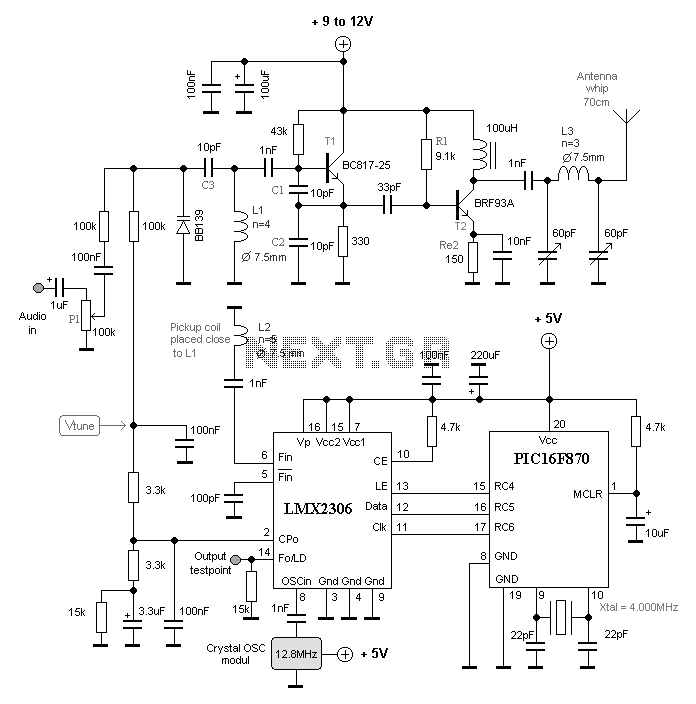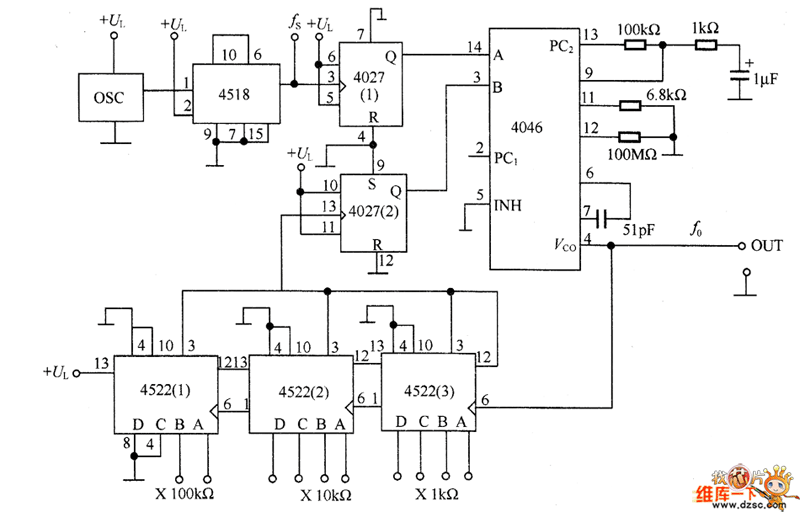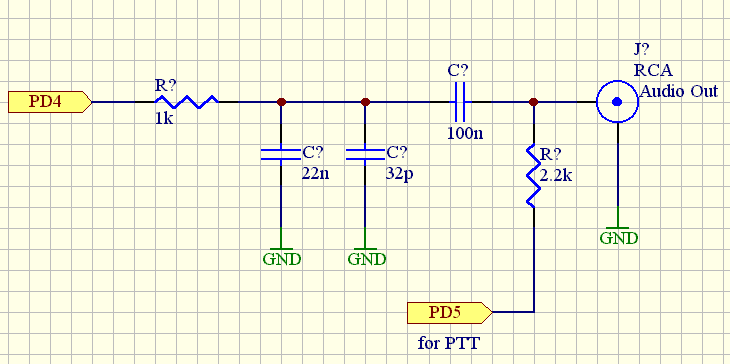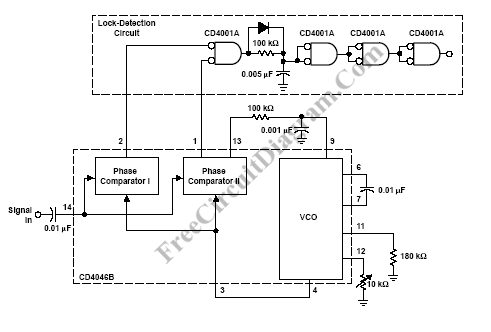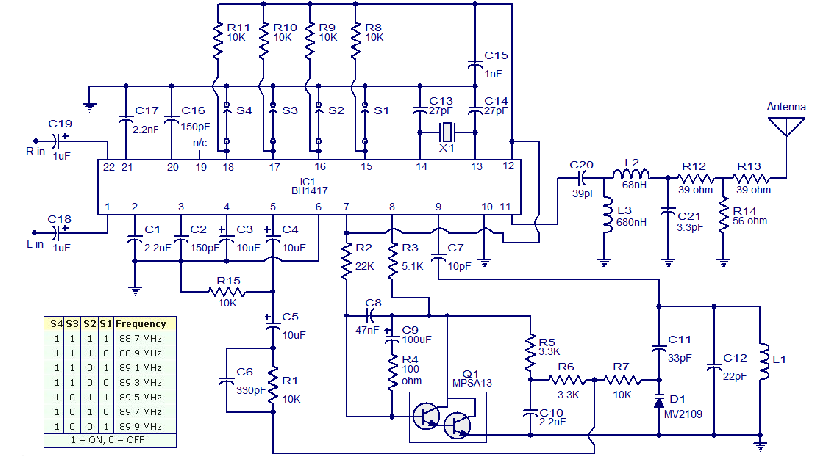
AFSK WITH PLL
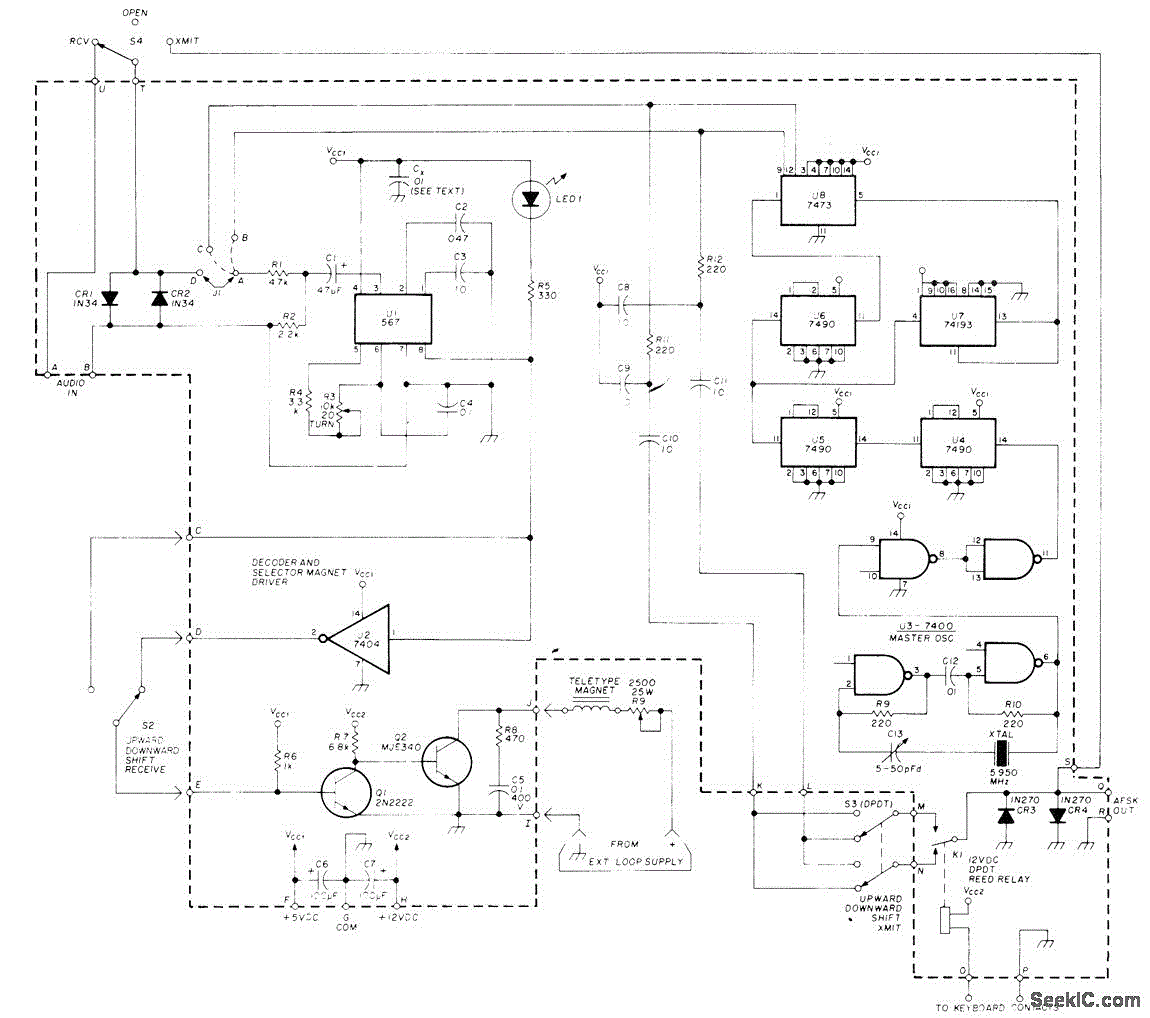
A complete terminal unit and AFSK tone generator for VHF bands synthesizes tones digitally for a 170-Hz narrow shift and an 850-Hz standard shift, which are commonly found in VHF amateur RTTY bands. An additional feature is a PLL circuit that tracks drifting signals and replicates signals from which mark or space information is absent. The precision AFSK generator utilizes a 5.95-MHz crystal oscillator.
The terminal unit and AFSK tone generator are designed to facilitate efficient communication within VHF amateur radio bands, specifically focusing on Radio Teletype (RTTY) operations. The digital synthesis of tones allows for precise modulation, which is crucial for maintaining signal integrity during transmission. The generator supports two specific frequency shifts: a narrow shift of 170 Hz, typically used for lower bandwidth requirements, and a standard shift of 850 Hz, which is more common in RTTY applications.
The inclusion of a Phase-Locked Loop (PLL) circuit enhances the functionality of the unit by enabling it to automatically adjust to frequency drifts in the received signals. This feature is particularly beneficial in dynamic environments where signal conditions can change rapidly, ensuring that the transmitted tones remain in sync with the intended modulation.
The core of the precision AFSK generator is a 5.95-MHz crystal oscillator, which provides a stable frequency reference. This oscillator is crucial for generating the accurate tones required for AFSK modulation. The output from the oscillator is processed through digital synthesis techniques to create the specific frequency shifts required for RTTY operation.
Overall, this terminal unit and AFSK tone generator represent a sophisticated solution for amateur radio operators engaged in digital communications, offering both reliability and versatility in a compact design. The integration of advanced features such as digital tone synthesis and PLL tracking makes it a valuable tool for effective VHF communication.Complete terminal unit and AFSK tone generator for VHF bands synthesizes tones digitally for 170-Hz narrow shift and 850-Hz standard shift found in VHF amateur RTTY bands. Additional feature is PLL circuit that follows drifting signal and copies signals from which mark or space information is missing.
Precision AFSK generator consists of 5.95-MHz crystal osc.. 🔗 External reference
The terminal unit and AFSK tone generator are designed to facilitate efficient communication within VHF amateur radio bands, specifically focusing on Radio Teletype (RTTY) operations. The digital synthesis of tones allows for precise modulation, which is crucial for maintaining signal integrity during transmission. The generator supports two specific frequency shifts: a narrow shift of 170 Hz, typically used for lower bandwidth requirements, and a standard shift of 850 Hz, which is more common in RTTY applications.
The inclusion of a Phase-Locked Loop (PLL) circuit enhances the functionality of the unit by enabling it to automatically adjust to frequency drifts in the received signals. This feature is particularly beneficial in dynamic environments where signal conditions can change rapidly, ensuring that the transmitted tones remain in sync with the intended modulation.
The core of the precision AFSK generator is a 5.95-MHz crystal oscillator, which provides a stable frequency reference. This oscillator is crucial for generating the accurate tones required for AFSK modulation. The output from the oscillator is processed through digital synthesis techniques to create the specific frequency shifts required for RTTY operation.
Overall, this terminal unit and AFSK tone generator represent a sophisticated solution for amateur radio operators engaged in digital communications, offering both reliability and versatility in a compact design. The integration of advanced features such as digital tone synthesis and PLL tracking makes it a valuable tool for effective VHF communication.Complete terminal unit and AFSK tone generator for VHF bands synthesizes tones digitally for 170-Hz narrow shift and 850-Hz standard shift found in VHF amateur RTTY bands. Additional feature is PLL circuit that follows drifting signal and copies signals from which mark or space information is missing.
Precision AFSK generator consists of 5.95-MHz crystal osc.. 🔗 External reference
